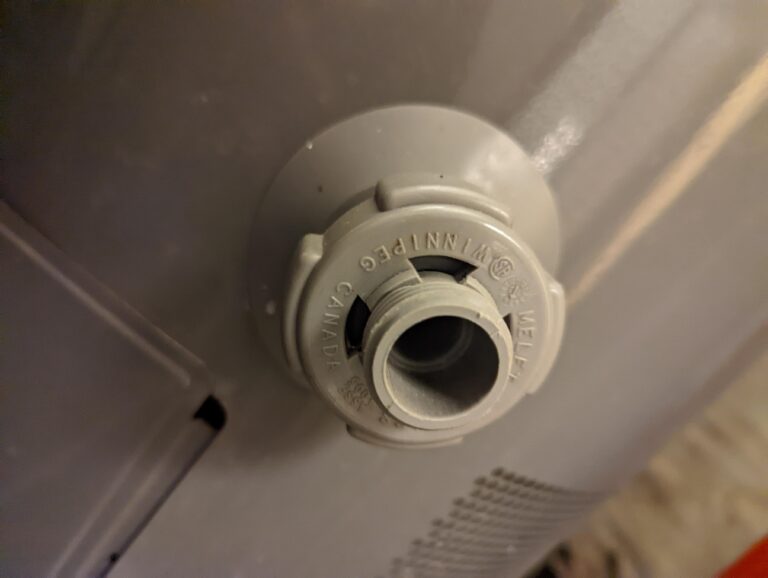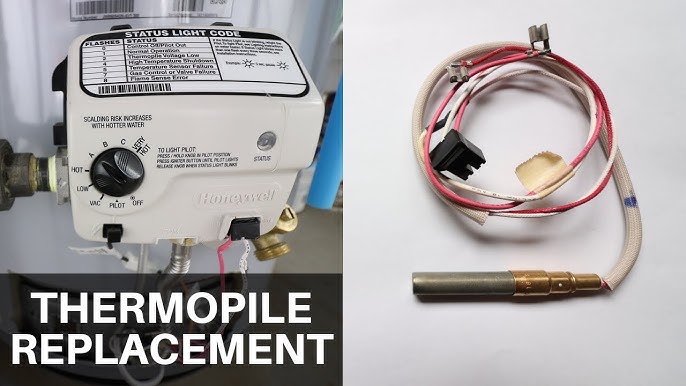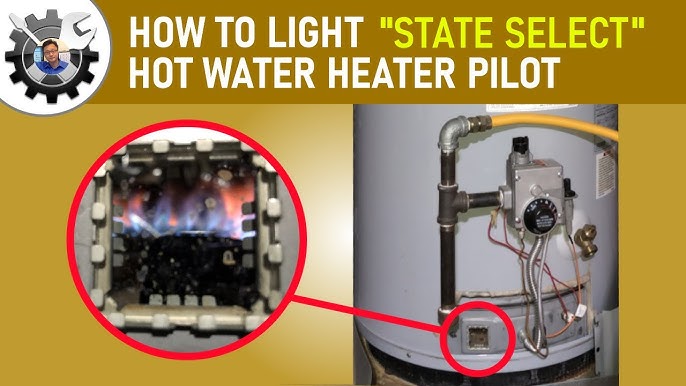Imagine this: You’re ready for a relaxing hot shower, but when you turn on the tap, only cold water greets you. Frustrating, right?
If you’ve recently flushed your water heater and are now faced with this icy surprise, you’re not alone. Many homeowners find themselves scratching their heads over why there’s no hot water after performing what seemed like a routine task. But don’t worry, you’re in the right place.
This article will guide you through the possible reasons for this unexpected issue and how you can fix it, ensuring you never have to endure a cold shower when you least expect it. So, stick around, because understanding your water heater’s quirks could save you time, money, and a lot of chilly discomfort.
/BHG-how-to-flush-a-water-heater-5DZyjeHjKD1Awe4bJ9H2jf-d3be25856769424db5883b60c033143f.jpg)
Credit: www.bhg.com
Common Causes Of No Hot Water
Flushing a water heater often leads to no hot water due to sediment build-up blocking heat transfer. Incorrect thermostat settings or faulty heating elements may also cause hot water issues after flushing. Regular maintenance and checks can prevent these common problems.
Experiencing no hot water after flushing your water heater can be frustrating, especially when you’re expecting a steamy shower or a warm bath. Understanding the common causes can help you quickly diagnose and address the issue. Let’s explore some of the typical reasons why your water heater might not be delivering hot water as expected.Thermostat Issues
One of the most common culprits behind no hot water is a faulty thermostat. The thermostat controls the temperature of the water in your tank. If it’s set too low or not functioning properly, you won’t get the hot water you need. Imagine setting your thermostat to a cozy temperature, only to find the water lukewarm. Check if the thermostat is correctly set and functioning. Sometimes, a simple adjustment can make a world of difference.Electrical Problems
Electrical problems can also cause your water heater to stop producing hot water. A tripped circuit breaker or a blown fuse might be the reason your heater isn’t working. Have you checked your electrical panel recently? A quick glance might reveal a flipped switch that’s easy to fix. Addressing electrical issues promptly can save you from long cold showers.Sediment Buildup
Over time, sediment can accumulate at the bottom of your water heater tank. This buildup can insulate the water from the heating elements, preventing it from reaching the desired temperature. Regular maintenance, such as flushing the tank, can help prevent sediment buildup. Have you ever thought about the impact of neglecting this simple task? Keeping your water heater clean ensures efficient operation and hot water on demand.Pilot Light Troubles
For gas water heaters, the pilot light is essential for heating the water. If the pilot light goes out, your water heater won’t function. Do you know how to relight a pilot light? Often, it’s a straightforward process that involves following the manufacturer’s instructions. Ensuring the pilot light is on can be a quick fix to restore your hot water supply. Understanding these common causes can empower you to tackle the issue head-on. Next time you find yourself without hot water, you’ll know exactly where to start looking. What steps will you take to ensure your water heater remains reliable? Taking proactive measures can save you time and hassle down the road.Diagnosing The Problem
Experiencing no hot water after flushing your water heater? Several factors could be at play. Check for sediment buildup or a malfunctioning thermostat, which can affect heating efficiency. Also, inspect the pilot light or heating element to ensure proper operation.
Regular maintenance can prevent these issues.
Diagnosing why there’s no hot water after flushing a water heater can be tricky. It involves checking different components to find the root cause. Understanding these components is key to fixing the problem effectively. Let’s dive into the steps for diagnosing the issue.Checking Thermostat Settings
Start by checking the thermostat settings. Ensure the temperature is set correctly. Incorrect settings can lead to no hot water. Adjust the thermostat to a higher setting if needed. Wait a few minutes and check again.Inspecting Electrical Connections
Inspect the electrical connections carefully. Loose or damaged wires can disrupt power supply. Ensure all connections are secure and intact. Use a multimeter to check for proper voltage. This can help identify electrical issues.Examining Sediment Levels
Sediment buildup can block heat transfer in the heater. Drain a small amount of water from the tank. Check for sediment at the bottom. If present, it may need a complete flush. Regular maintenance can prevent sediment issues.Assessing Pilot Light Function
Check the pilot light in gas water heaters. It should stay lit consistently. If it goes out, relight it following the instructions. A faulty thermocouple might cause it to go out often. It may need replacement if issues persist. Understanding these checks can help restore hot water efficiently. Each step targets a potential problem area. Identifying the issue saves time and avoids unnecessary repairs.Quick Fixes To Restore Hot Water
Experiencing no hot water after flushing your water heater? Check for tripped breakers or reset the thermostat. Ensure valves are open and not blocked. Simple steps can restore warmth quickly.
Experiencing no hot water after flushing your water heater can be quite a nuisance, especially when you need that steaming shower or hot cup of tea. Luckily, you don’t always need a professional to solve this common issue. Sometimes, simple adjustments can bring back your hot water and restore your peace of mind. Here are some quick fixes you can try to get your hot water flowing again.Adjusting Thermostat
First, check the thermostat settings on your water heater. Is it set too low? You might be surprised how often this overlooked detail can be the culprit. Adjust the temperature to a higher setting, but be cautious to avoid scalding water. Does the water heat up now?Resetting Circuit Breaker
Next, head to your home’s electrical panel. Locate the circuit breaker for your water heater. Sometimes, a simple reset can solve the issue. Flip the switch off and then back on. It’s a small step, but can make a big difference. Have you ever had a power surge that tripped your breaker without realizing?Flushing Sediment
Sediment buildup can impede your water heater’s performance. Drain a few gallons from the tank to flush out any sediment. This can improve efficiency and water temperature. Be careful, as the water can be hot. Have you ever noticed how a small amount of sediment can affect your water heater’s performance?Relighting Pilot Light
For gas water heaters, the pilot light might have gone out. Follow the manufacturer’s instructions to safely relight it. Ensure proper ventilation and safety measures are in place. Does your water heater have an easy-to-access pilot light? Taking these steps can often resolve the issue and restore your hot water quickly. Remember, regular maintenance can prevent these problems from arising frequently. If none of these fixes work, it might be time to call a professional. How often do you perform routine checks on your water heater?Preventative Measures
Experiencing no hot water after flushing a water heater can be frustrating. Regular maintenance, such as inspecting valves and cleaning sediment buildup, helps prevent this issue. Ensuring proper settings and checking the thermostat can also maintain water temperature.
Having no hot water after flushing your water heater can be frustrating. However, with the right preventative measures, you can avoid such inconveniences. By staying proactive, you can ensure your water heater runs efficiently and lasts longer. Let’s dive into some practical steps you can take to maintain your water heater in peak condition.Regular Maintenance
Regular maintenance is key to a well-functioning water heater. Just like you service your car, your water heater needs attention too. Schedule a maintenance check every six months. This prevents minor issues from turning into costly repairs. A simple routine might save you from a cold shower on a chilly morning.Monitoring Temperature Settings
Are you aware of your water heater’s temperature settings? Keeping the thermostat at the right temperature is crucial. Aim for 120°F to balance comfort and energy efficiency. Higher temperatures can lead to scalding and increased energy bills. Check your settings regularly to ensure they haven’t changed accidentally.Periodic Flushing
Flushing your water heater is not a one-time task. Sediment buildup can cause heating problems and reduce efficiency. Perform a periodic flush at least once a year. This can be a DIY task; just remember to follow the manufacturer’s instructions. It’s a small effort that leads to big savings.Professional Inspections
Sometimes, a professional eye is necessary. An expert can spot issues you might overlook. Schedule a professional inspection annually. They can check for signs of wear, leaks, and other potential problems. Investing in a professional check-up can extend the life of your water heater and ensure peace of mind. By taking these preventative measures, you can avoid the headache of unexpectedly cold showers. Have you considered how these simple steps could improve your daily routine? Don’t wait for a problem to arise—start implementing these tips today.When To Call A Professional
Experiencing no hot water after flushing your water heater can be frustrating. While minor issues can often be solved with a bit of DIY, some situations clearly signal the need for a professional. Knowing when to call in an expert can save you time, money, and a lot of stress. Here’s when you should consider dialing a professional for help.
Persistent Issues
If you’re frequently dealing with no hot water or inconsistent temperatures, it’s time to think about getting a professional involved. This could mean there’s an underlying issue that isn’t easily visible. A certified technician can diagnose and fix the problem efficiently, ensuring your water heater functions properly.
Complex Electrical Problems
Water heaters involve complex electrical components. If you suspect a faulty thermostat or wiring issue, avoid taking the DIY route. Working with electricity without proper knowledge can be dangerous. A professional has the right tools and expertise to handle these electrical problems safely.
Extensive Sediment Buildup
Over time, sediment can accumulate at the bottom of your water heater, affecting performance. If flushing your water heater doesn’t improve the situation, sediment buildup might be extensive. A technician can perform a thorough cleaning or recommend other solutions to restore your heater’s efficiency.
Gas Supply Concerns
For gas water heaters, issues with the gas supply can be particularly concerning. If you smell gas or suspect a leak, immediately shut off the gas supply and call a professional. Gas problems are not only complex but can also be hazardous. Ensuring safety should always be your top priority.
Have you faced any of these issues with your water heater? Remember, it’s okay to ask for help. Sometimes, the smartest solution is to let someone with the right skills handle the problem.

Credit: www.youtube.com

Credit: www.reddit.com
Frequently Asked Questions
Why Is My Water Not Getting Hot After Replacing The Water Heater?
Check if the power supply is connected properly to the new heater. Inspect the thermostat settings and ensure they are correct. Verify if the circuit breaker has tripped. Examine the heating elements for damage or malfunction. Consult a professional if issues persist after these checks.
How To Restart A Water Heater After Draining?
To restart a water heater, first close the drain valve and ensure the water supply is on. Fill the tank completely. Restore power by flipping the circuit breaker or turning the gas valve to “on. ” Set the thermostat to the desired temperature.
Check for leaks and proper operation.
How Long Does It Take For A Hot Water Heater To Heat After Reset?
A hot water heater typically takes 30 to 60 minutes to heat up after a reset. Factors like heater size and water temperature can affect this time. Ensure the heater is functioning properly to achieve optimal performance. Regular maintenance helps maintain efficient heating and reduces wait time.
What To Do After Flushing A Hot Water Heater?
Check for leaks after flushing the hot water heater. Ensure the temperature setting is appropriate. Turn the power or gas supply back on. Allow the water to heat up before use. Regularly inspect for any unusual noises or issues.
Conclusion
Solving no hot water issues can be straightforward. Check for common problems first. Inspect the thermostat and heating elements. Ensure power supply is steady. Look for leaks or unusual noises. Regular maintenance prevents future issues. A little effort now saves time later.
If unsure, consider calling a professional. They can diagnose and fix complex problems. Remember, consistent hot water is essential. Stay proactive with your water heater care. Your comfort depends on it. Keep these tips in mind. Enjoy reliable hot water every day.



